Of savage tribes and glorious empires
Chapter 15 – Galatia
The great Gallic war was over. The Celtic tribes in Gallia formed the Gallic Confederation, whose council regularly converged outside the city of Cenabum. The victorious tribes invested men with power over the tribes they had defeated, so also these new tribes were present in the “Ogmioteriam Odemorix“. The Confederation consisted of the tribes of the Arverni, Segusiavi, Sequani, Treveri, Haedui, Aulerci, Veneti, Pictones, Bituriges and Volcae-Arecomici. Also the Aquitanian client kingdom of the Tarbelli, the Graeco-Celtic client kingdom of Massalia, the tribe of the Liguri who represented the Italic allies and the governor of Mediolanum and Bononia were members of the council. Therefore the Gallic Confederation ruled the fate of over 1.1 million people .
After eight years of war, the Celtic tribes managed to bring peace to their lands. Under the eyes of the council, they travelled to Britannia and established trade with the Casse, who had brought large parts of the Island under their control during the last decades.
To construct greater ships and manage the increased amount of trading goods, the tribes at the coasts built larger harbours. In Gergovia, the original city of the Arverni, the high king of old Aneirin oi Lugos, who once had transformed the Arverni into the greatest power in Gallia and defeated the Haedui, became revered as a semi god and his tomb was transformed into a shrine. Now the war was over, people had time for rituals and religion.
In Tolosa the Massalian client king, Tincommios moc Gobannitio, brought the construction of the temple of Teutates to completion, as he promised to the war god before he had subjected the Volcae-Arecomici.
In Bibracte Riankiadoc married his daughter Bergo off to a young man called Berdic moc Ceanatis, who had proven himself to be worthy of this honour during the last campaign Riankiadoc had led against the Bituriges.

And also in Ivomagos d’Aler’s family the next generation’s time had come. Epasnactos, his son, had come at age. Ivomagos was very proud of his son, who was a prime example of what the Celts deemed to be a true man. Not only was he intelligent, well built and vigorous, he also was unselfish, optimistic and loyal to his people. Furthermore Epasnactos’ appearance was an image of his father. Everyone who knew him was sure, that he would become a very powerful and wise man.
------------------------------------------------------------------
Far in the east, the Celtic village of Morgandy prospered. Jewellery produced by the skilled hands of the Celts were the height of fashion in the great cities of Hayasdan. The Hay ladies were mad on these adornments as the men were on Celtic long swords. Many people who had lived in small and poor villages in the mountains moved into this town. Even from the lands in the south many people of Celtic origin, whose fathers and grandfathers had served as mercenaries in the armies of Makedonia, the Arche Seleukeia or the Ptolemaioi found a new home in Morgandy. For over two years the Celts lived in peace with the neighbouring peoples, so this was the right time for young Cunobelin oi Lugos to get married and thus start a family.
But in the year of 236 BC the Celts received a message from a nobleman of the Hay, in which they were told that it was about time to discharge the debt. The Celts could settle down in Hayasdan for years and the Hay wanted the Celts to do them a favour in return now. Apparently the Arche Seleukeia had sent an assassin to kill the king of the Hay, who has been an enemy of the Seleukids for ages. He would take the main trade route and pass the Celtic village soon. The Celts were told to find and to kill him. And this was exactly what they did.
Unfortunately this Seleukid assassin turned out to be a noble Statesman who was on the way to Armavir to make peace with the king of the Hay. The Hay nobleman who entrusted the Celts with the assassination of this man was one of those, who loathed the Arche Seleukeia and wanted to keep the status of war at any cost. Now the Celts were in a dilemma. Of course the king of the Hay didn’t know anything about the assault and held the Celts liable for this misdeed. At the same time the elder brother of the Seleukid nobleman, one of the most powerful and respected men in the whole empire, led his army to Morgandy without hesitation, in order to exterminate the assassins of his beloved brother.
Once again the Celts had to leave their homes. Led by Calpornos moc Ollovico, who had been elected to be the leader by his people during the last years, the inhabitants of Morgandy migrated southwards. When the Seleukid general had destroyed the small village, he sent a part of his army to chase them. Just before they caught up to the Celts, they reached the Seleukid city of Karkathiokerta, which was besieged by the Kingdom of Pontos.
After ousting the Arche Seleukeia from Mikra Asia, the King of Pontos had planned a great military campaign against the Arche. After taking Mazaka, Karkathiokerta, a great city protected by high walls but only a few warriors, now was his main target.
The king of Pontos promised the Celts to become client rulers over Galatia, where many people with Celtic ancestors lived and thus was not easy to control by non-celtic rulers anyway, if they took the city for him, so he could let the main part of his army rest. Furthermore, as his client rulers, in the time to come they had fight for him whenever he called. Calpornos moc Ollovico had no option but to agree and so the Celts joined the siege of Karkathiokerta.
The Seleukid army that followed the Celts was surrounded by the army of Pontos, but many men could escape to the city of Karkathiokerta. Now, with no hostile army in their backs, the Pontic and Celtic armies started the attack.
The Celts stood in the first battle line, while the Pontic soldiers used their highly developed siege equipment to open the gates of the city. Never had the Celts seen such massive walls in their lives.
The allied soldiers started to batter down the gates of the city, permanently pelted with arrows from the city towers. At the same time the Pontic siege tower had reached the walls and the soldiers took them without meeting with resistance.
When the gates were battered down, the Celts, led by Fergalos moc Lannildot, Faros oi Lugos, Calpornos moc Ollovico and Cunobelin oi Lugos, stormed the city and drove the enemy back to the city center.
There they were received by some of the best warriors the Arche Seleukeia could field at these times. The fierce Shipri Tukul. Originally from Babylon, the Seleukid kings stationed these troops in many of their endangered cities at the borders to hostile territory.
Babylonian Shipri Tukul
In addition the Seleukids deployed heavy cavalry. Protected by iron and bronze, just like the Sauromatae in the steppes, the shiny metal of these horsemen frightened many a Celtic warrior. At the same time these Seleukid soldiers never had seen real Celtic warriors before. Especially the ones armed with longswords and fighting naked were bloodcurdling.
In the end the Celts crushed the enemy by sheer number and won the day.
As promised, they were now allowed to travel the kingdom of Pontos and settle down in Galatia. This time the Celts had definitely found a home, but still they knew that it would not take long until the marching orders from the king of Pontos would arrive, for he already hinted to have great plans with them.
------------------------------------------------------------------
With the end of the second Gallic war, northern Europe was at peace. But the south of Europe continued to be an inferno. The kingdom of Epeiros and the Koinon Hellenon still fought an unbelievably cruel war against each other. Now that Epeiros had to fight three opponents, the Romans, the Carthaginians and the Koinon Hellenon, they started to get into a tangle. In an expensive campaign the Koinon Hellenon managed to take Illyria Hellenike and the city of Epidamnos. Epeiros had made huge efforts in order not to lose this province, pulled out troops from Italia and sent them to Illyria. Weakened by this measure and though the Epeirotes could defeat the Carthaginians on Sicilia, they could not withstand the Roman armies, who conquered all of southern Italy within two years.
But now the Roman armies deployed at the edge of the Italian peninsula and were ready to take the last city of Epeiros on Sicily, which was exactly what the Carthaginians intended to do too.
Rome knew that Carthage had claimed the rule over Sicily, but the Epeirotes had to be thrown out of Italy and Sicilia, so the Romans conquered the city of Messana too and declared the Carthaginians claim for Sicily to be illegal. The Kart-Hadastim could not let them get away with that, deployed an army near Messana and started, what the Romans later will call the first Punic war.
235 BC, after one year of war and several defeats, the Romans managed to lay siege to the city of Lilibeo and were not far from throwing the Kart-Hadastim out of Sicily.
It was in the same year, that the peace in northern Europe was on a knife-edge again. The Celtic Confederation had recovered well from the great war and flourished. But there was a people, that started to bother the Celts more and more……
Known territory in 235 BC






















 x 15
x 15

 Reply With Quote
Reply With Quote










 <-- My "From Basileion to Arche - A Makedonian AAR" Memorial Balloon.
<-- My "From Basileion to Arche - A Makedonian AAR" Memorial Balloon. 








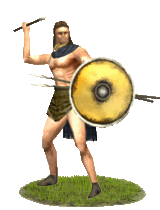 Gaesatae
Gaesatae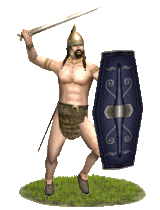 Solduros
Solduros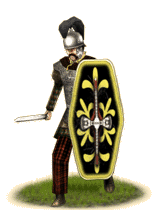
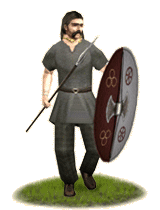 Lugoae
Lugoae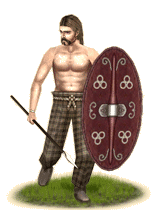 Iaosatae
Iaosatae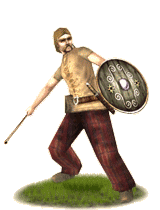 Sotaroas
Sotaroas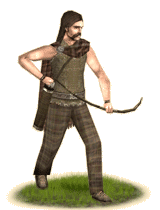
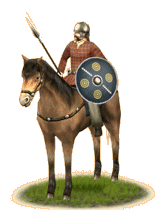 Brihentin
Brihentin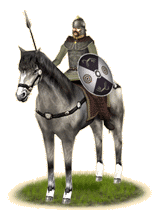










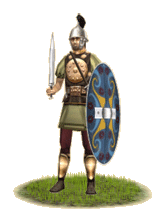








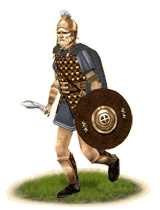 Lusotannan Gestikapoinann
Lusotannan Gestikapoinann 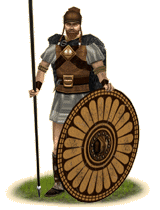
















 Hellenic Thureophoroi
Hellenic Thureophoroi
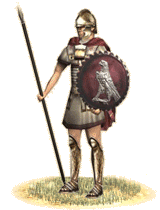 Ptolemaic Klerouchikon Agema
Ptolemaic Klerouchikon Agema












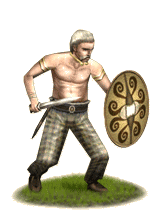 Galatikoi Kluddolon
Galatikoi Kluddolon

















Bookmarks